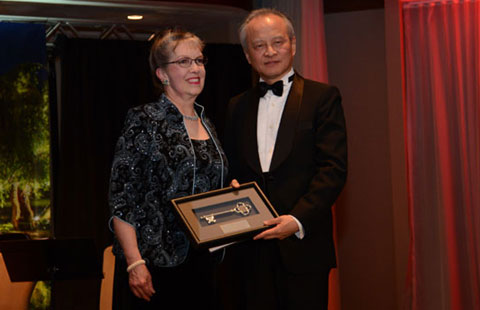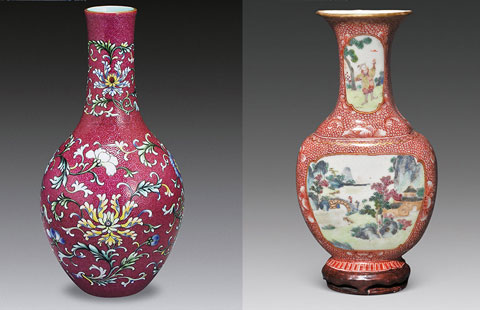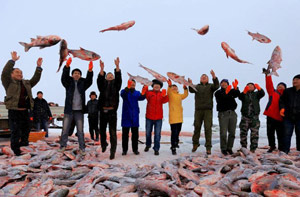FTAs form base of regional integration
Updated: 2014-11-26 07:40
By Xu Man(China Daily)
|
||||||||
China, the Republic of Korea and Japan are holding the sixth round of talks for a trilateral free trade agreement (FTA) in Tokyo. The talks follow the conclusion of substantive negotiations between China and the ROK on an FTA during the Asia-Pacific Economic Cooperation meeting in Beijing and the formal completion of negotiations on a China-Australia FTA at the G20 Summit in Brisbane, Australia.
If the two landmark agreements eventually take effect, they will boost the economic integration process in the Asia-Pacific region. And if China, the ROK and Japan ultimately agree to an FTA, the economic cooperative future of the region would become more secure.
China has become the largest trading partner, largest export destination and largest source of imports for the ROK and Australia both, while the ROK is China's third-largest trading partner country. Trade between China and the ROK reached $274 billion in 2013 on the back of South Korean demand for Chinese mechanical, electrical, metal and agricultural products.
According to the latest negotiations on a China-ROK FTA, more than 90 percent of all bilaterally traded goods will be tariff-free, accounting for more than 85 percent of the bilateral trade value. The FTA will also cover 17 areas, including trade in goods and services, investment and trade rules, and issues such as e-commerce and government procurement.
Beijing and Seoul have also agreed to further negotiations on service trade according to the "negative list" model, which specifies areas where foreign capital is banned or limited, to ensure "pre-entry national treatment" to investors. The FTA is expected to benefit China by 1-2 percent of GDP and the ROK by 2-3 percent, as well as expedite the China-ROK-Japan FTA negotiations.
The China-Australia FTA, which could be worth about $18 billion, is seen by both sides as a win-win outcome. Australia would eventually reduce tariffs to zero on all goods imported from China, and China would do the same for a vast majority of Australian goods, once the deal is finalized.

 Music at her fingers
Music at her fingers
 Across America Over the Week (Jan 16 - Jan 22)
Across America Over the Week (Jan 16 - Jan 22)
 Spend Chinese New Year in style
Spend Chinese New Year in style
 Ili river valley becomes a popular destination for swans
Ili river valley becomes a popular destination for swans
 Philip Ma: from scientist to businessman
Philip Ma: from scientist to businessman
 Birmingham's Spotlight on China dinner
Birmingham's Spotlight on China dinner
 How to distinguish doucai, wucai, Famille-rose and enamel porcelain
How to distinguish doucai, wucai, Famille-rose and enamel porcelain
 Xinjiang lake in bumper fishing season
Xinjiang lake in bumper fishing season
Most Viewed
Editor's Picks

|

|

|

|

|

|
Today's Top News
Houston's SW Chinatown
China to focus on reforms, opening of capital market
Slowdown brings new risks to banks
Trade group calls for BIT
Market status for China is 'political' issue
Birmingham's Spotlight on China dinner
Bank takes renminbi-clearing seriously
Traditional Garb
US Weekly

|

|








